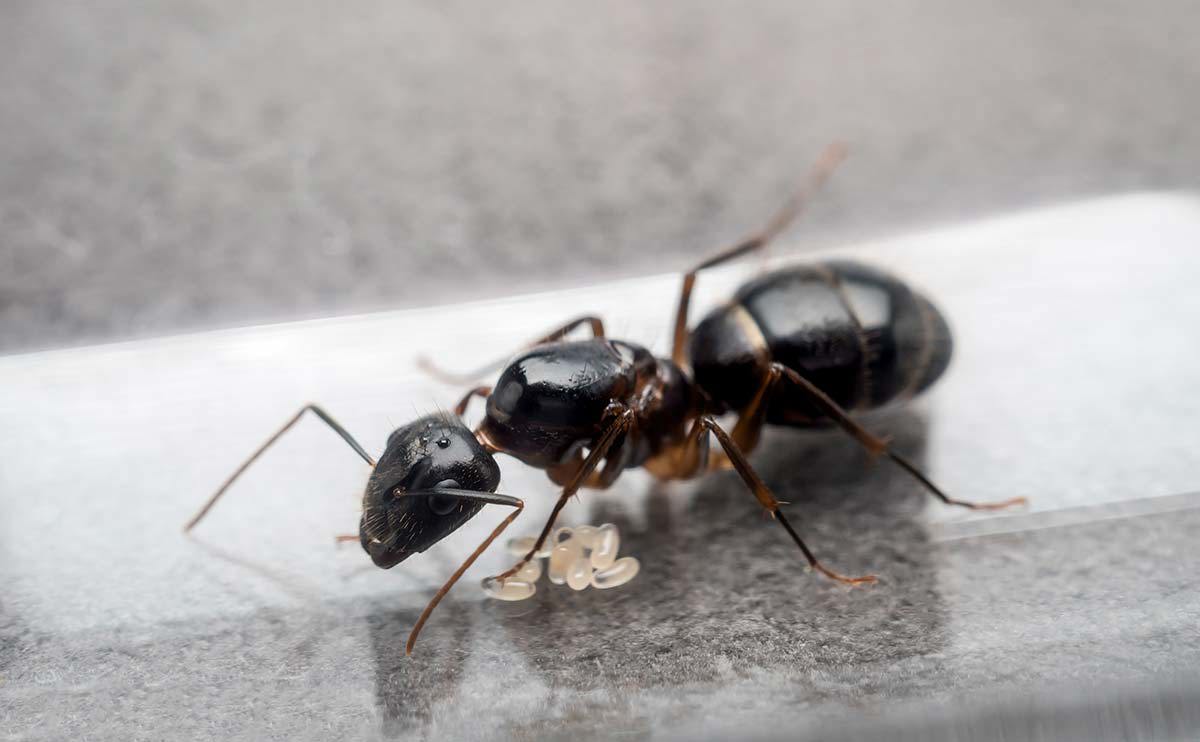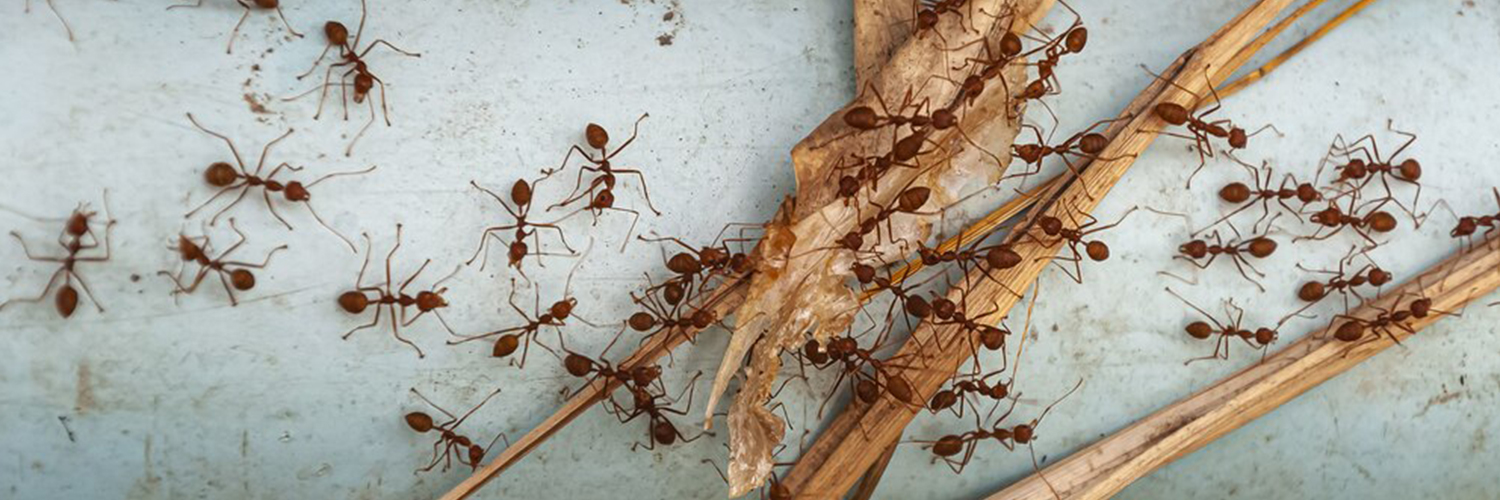Ant Extermination Services in Fort Lauderdale
Helping You Reclaim Your Space from Florida’s Most Persistent Pests
Fort Lauderdale is renowned for its picturesque beaches, thriving culinary scene, and vibrant nightlife. Yet beneath the city’s sun-soaked appeal, there’s another force thriving in the region’s warm, humid climate: ants. Thanks to Florida’s subtropical environment, ant populations here can flourish year-round and expand their colonies faster than you might imagine. This page will guide you through why ants are especially drawn to Fort Lauderdale, outline the most common ant species in the area, and present strategies for effective ant extermination. We’ll also extend our focus to Plantation, a neighboring community facing similar ant challenges. By understanding what drives ant infestations and taking proactive steps, you can keep your property clean, safe, and pest-free.
Florida’s Climate: A Paradise for Ants

Sunny skies, balmy weather, and a lively atmosphere make Fort Lauderdale a paradise for people—but the same conditions also benefit ant species seeking warmth, moisture, and food:
- Year-Round Warmth
Unlike colder regions that see a significant dip in insect activity during winter, South Florida’s mild temperatures allow ants to remain active nearly all year. They can continue reproducing and foraging even during months that would otherwise slow them down in cooler climates. - High Humidity
Fort Lauderdale’s proximity to the Atlantic Ocean, coupled with frequent rain, keeps humidity levels elevated. Ants need access to water sources, and the region’s moist environment ensures they won’t have to search far to find it—whether it’s dew on the grass, condensation near air conditioning units, or puddles after a shower. - Plentiful Food Supplies
From bustling outdoor dining areas to backyards with fruit-bearing trees, ants in Fort Lauderdale encounter myriad food opportunities. Crumbs, spills, and unsecured trash cans provide easy meals that enable their colonies to flourish. - Dense Vegetation
Suburban and urban neighborhoods alike often feature lush gardens, ornamental shrubs, and tropical plants. These landscapes not only attract ants with nectar and decaying organic matter but also offer secluded nesting spots close to human dwellings.
Put these factors together, and it’s no wonder ants find Fort Lauderdale so inviting. Small ant populations can quickly grow into major infestations when conditions remain favorable all year long.
Common Ant Species in Fort Lauderdale
While Florida hosts many ant species, a select group is especially well-adapted to urban and suburban environments in the Fort Lauderdale area. Recognizing which species you’re dealing with is key to choosing the right extermination method.
- Ghost Ants
- Appearance: Tiny ants featuring dark heads and pale or translucent abdomens, making them difficult to spot initially.
- Behavior: Attracted to sugary foods, these ants often nest in moist locations such as bathrooms, kitchens, or potted plants.
- Concerns: Ghost ants rarely cause structural harm, but they can spread rapidly, forming multiple colonies indoors if not promptly addressed.
- Carpenter Ants
- Appearance: Larger than most common household ants, typically black or red-and-black in color.
- Behavior: Carpenter ants don’t eat wood but tunnel through damp or decaying wood to construct nests. Any place with persistent moisture, like leaky window frames, can attract them.
- Concerns: Left unchecked, their tunneling can weaken structural elements and lead to expensive repairs.
- Fire Ants
- Appearance: Reddish-brown ants that often build noticeable mounds in lawns, parks, or gardens.
- Behavior: Fire ants swarm aggressively when disturbed and deliver painful stings. They favor sunny, open areas for their mounds.
- Concerns: Multiple fire ant mounds can render outdoor spaces dangerous for pets and people, posing health risks for those with allergies.
- Pharaoh Ants
- Appearance: Tiny, yellowish ants that frequently inhabit warm, humid indoor sites.
- Behavior: Pharaoh ants spread by “budding,” meaning they form satellite colonies if threatened by conventional sprays. They also gravitate to hidden spaces like wall voids and behind appliances.
- Concerns: Spot-treating trails can actually exacerbate a Pharaoh ant infestation by causing colonies to fragment and spread.
- Argentine Ants
- Appearance: Medium-sized, uniformly dark brown ants that often travel in large, conspicuous trails.
- Behavior: Argentine ants build massive, interconnected colonies, sometimes called “supercolonies,” with multiple queens. They thrive in moist soil around planters, mulch, or yard debris.
- Concerns: Their sheer numbers can overwhelm homes and gardens, necessitating more extensive, repeated treatments.
- White-Footed Ants
- Appearance: Dark-bodied ants with lighter-colored feet, offering a visual clue for identification.
- Behavior: Large colonies form in roof eaves, wall voids, or behind siding, where they forage indoors for sweet or starchy foods.
- Concerns: While not a structural threat, white-footed ants can create unsightly trails and contaminate kitchens if populations grow large.
Each ant species occupies a slightly different niche, and understanding those differences helps determine which extermination methods are most effective.
How Infestations Grow Quickly
In Fort Lauderdale’s climate, ants rarely face the seasonal die-offs common in harsher regions. Mild conditions let them forage every month of the year, building strong pheromone trails that guide worker ants from their nests to reliable water or food sources. Furthermore, many local ant species can host multiple queens within a single colony. If you kill one queen, another may take over, or the colony may split into separate nests—making it crucial to target the entire colony rather than just the foraging ants you see.

Potential Risks and Hassles
Although ants are often perceived as less dangerous than other pests, they can still introduce problems:
- Physical Discomfort: Fire ants, in particular, can pose a serious threat, with stings resulting in welts, swelling, or even allergic reactions.
- Food Contamination: Ants that wander through trash or outdoor areas may track bacteria onto surfaces where food is prepared or stored.
- Structural Damage: Carpenter ants can hollow out wooden elements over time, jeopardizing a building’s integrity and inflating repair costs.
- Lifestyle Inconvenience: Persistent ant trails in a kitchen, bathroom, or backyard hamper your enjoyment of daily activities. Outdoor gatherings become stressful when mounds or trails lurk nearby.
By staying vigilant, you can catch infestations in their early stages—often a key factor in preventing widespread issues.
A Multi-Step Approach to Ant Extermination
Because Florida’s mild climate fosters rapid ant reproduction, dealing with infestations generally calls for a coordinated strategy:
- In-Depth Inspection
- Assess both indoor and outdoor areas, noting likely nesting spots, moisture sources, and potential entry points around doors, windows, or utility lines.
- Identify the ant species based on worker size, color, and behavior patterns.
- Tailored Treatment Methods
- Baits: Slow-acting baits enable worker ants to carry the poison back to the colony, wiping out the queen(s). This method is especially effective for ghost ants or Pharaoh ants that may scatter if disturbed.
- Non-Repellent Sprays: Applied along trails or near nest entrances, these sprays kill ants that come into contact with the treatment but won’t repel them outright.
- Direct Mound Treatments: Fire ant mounds may require specialized granules or drenches to target the queen and break the colony’s cycle.
- Disruption of Pheromone Trails
- Thoroughly cleaning surfaces with household products eliminates the chemical maps ants leave behind, making it tougher for new foragers to find your kitchen or pantry.
- Exclusion & Sealing
- Once colonies are reduced or eliminated, seal up cracks around windows, doors, and foundations.
- Repair leaky pipes and ensure your AC unit drains away from the building, reducing the moist conditions that some ants favor.
- Ongoing Monitoring
- Ants can reappear quickly if conditions remain ideal. Inspect your home’s perimeter regularly and address any new ant activity at the earliest sign to prevent reinfestation.
Day-to-Day Prevention Tactics
Even if you’ve successfully tackled an active infestation, staying proactive is important. A few small steps can go a long way:
- Prompt Cleanup: Wipe up spills, crumbs, and grease right away. A single sweet spill might be all it takes to invite an entire trail of ghost or Argentine ants indoors.
- Food Storage: Keep cereal, sugar, or pet food in airtight containers. This denies ants an easy food source and limits enticing odors.
- Pet Bowl Management: If possible, remove pet food bowls after feeding times. If left out continuously, ants can find and exploit that steady food source.
- Dry Out Moist Spots: Repair leaky faucets, drain standing water in the yard, and fix any roof or gutter leaks to reduce the humidity ants crave.
- Landscaping: Trim back shrubs and tree branches that touch your home’s exterior. These can act as bridges for ants to access higher entry points or roof eaves.
Maintaining these habits can significantly reduce the chances of a repeat ant invasion.

Coverage in Plantation
While Fort Lauderdale is our primary focus, residents of Plantation face many of the same ant concerns thanks to shared environmental factors:
- Tropical Landscaping: The beautifully manicured lawns and palm-lined streets in Plantation offer ants abundant shelter. They can nest beneath mulch, in thick grass, or around decorative plants.
- Frequent Rain & Irrigation: Heavy rain or automatic sprinkler systems keep soil moist, presenting the perfect conditions for ants to flourish.
- Urban-Suburban Blend: Plantation’s mix of commercial and residential zones means ants can migrate easily between yards, parks, and restaurant waste areas, sustaining large, interconnected colonies.
Homeowners and businesses in Plantation benefit from the same extermination tactics used in Fort Lauderdale—thorough inspections, targeted baiting, controlling moisture, and consistent sealing to prevent re-entry. By addressing the root causes that encourage ant growth, residents can maintain a more comfortable, pest-free environment.
When to Seek Professional Help
While some small infestations can be managed with off-the-shelf bait and vigilant housekeeping, certain scenarios are best handled by trained technicians:
- Repeated Infestations
- If ants persist despite multiple attempts to eliminate them, there may be multiple queens or satellite colonies that require specialized products or deeper inspections.
- Extensive Fire Ant Mounds
- Large or numerous mounds can be dangerous. Fire ants can deliver severe stings to anyone who accidentally disturbs the nest. Professionals often have stronger treatments designed specifically for mound eradication.
- Carpenter Ant Activity
- Signs of damaged wood—like small piles of sawdust or hollow-sounding beams—suggest a carpenter ant problem that might compromise structural elements if left unchecked.
- Commercial Settings
- Restaurants, hotels, and other service businesses can’t afford the negative impact of visible ant activity. Professional pest control ensures minimal disruption to operations.
Professional exterminators will pinpoint the exact species, use advanced treatments not generally available in retail outlets, and provide guidance for sealing and maintaining your property in the long run.
Enjoying an Ant-Free Fort Lauderdale Lifestyle
Between its oceanfront vistas, cultural attractions, and warm climate, Fort Lauderdale provides an idyllic setting for both residents and visitors. Still, ants can become a persistent nuisance, interrupting everything from meal prep in your kitchen to outdoor barbecues or family gatherings in the yard. By educating yourself on which species are most common, adopting a strategic extermination approach, and applying preventative measures, you can minimize the inconvenience and health risks associated with these pests.
Key Takeaways:
- Start with Identification: Knowing if you’re dealing with ghost ants, carpenter ants, or fire ants guides the most effective control methods.
- Remove Attractants: Keep living areas tidy, store food properly, and promptly address any moisture issues.
- Act Fast: Ant problems escalate quickly in Florida’s year-round warm climate. Early intervention spares you from more serious infestations.
- Consider Professionals: Chronic invasions or certain high-risk species—like fire ants or carpenter ants—often require specialized expertise.
Property owners in Plantation can follow the same guidelines: controlling moisture, sealing off entry points, practicing good sanitation, and monitoring yard conditions are all critical in keeping ants at bay. By being proactive, you can enjoy a healthier, more comfortable living space throughout the year—minus the trailing lines of ants marching through your home or yard.
